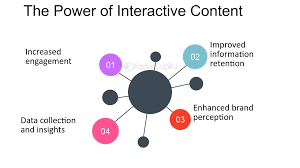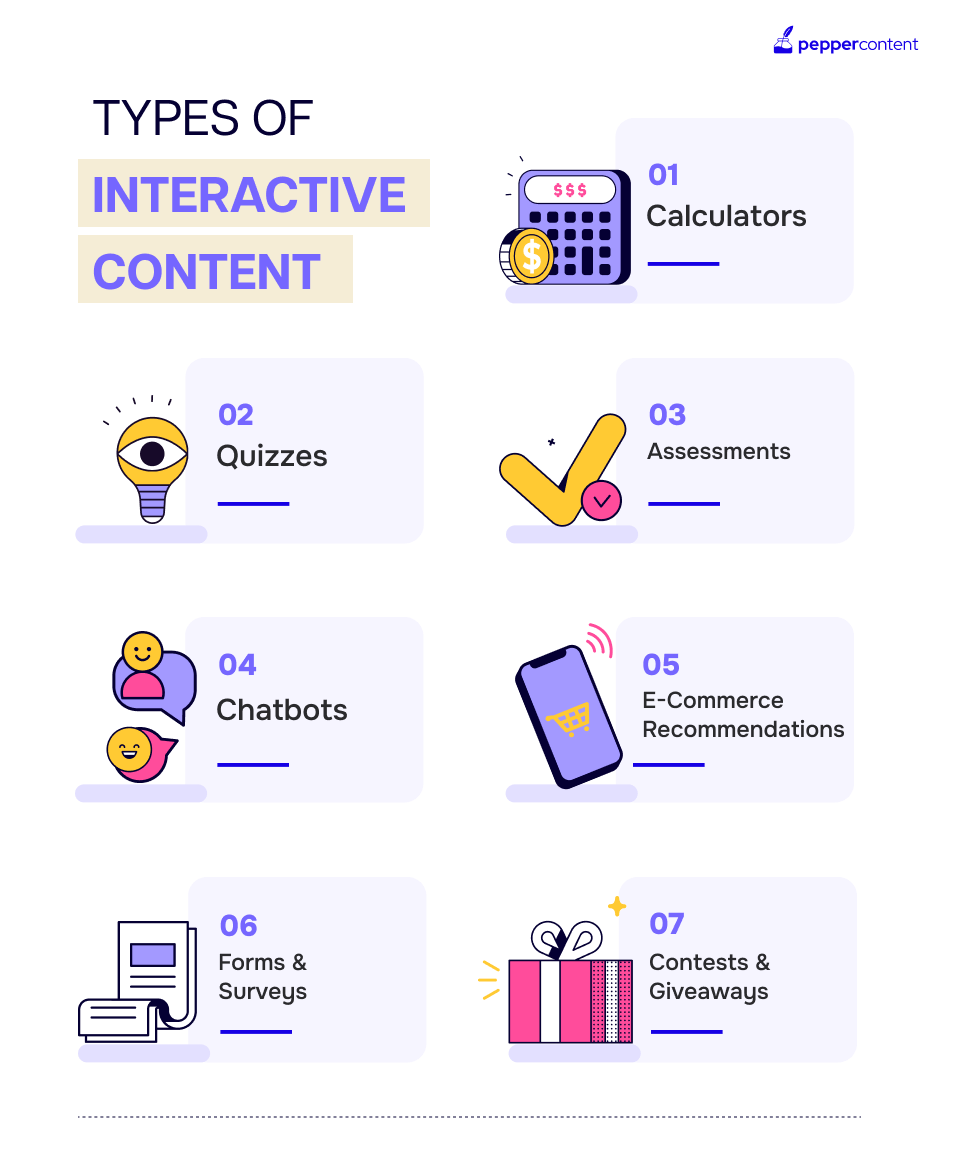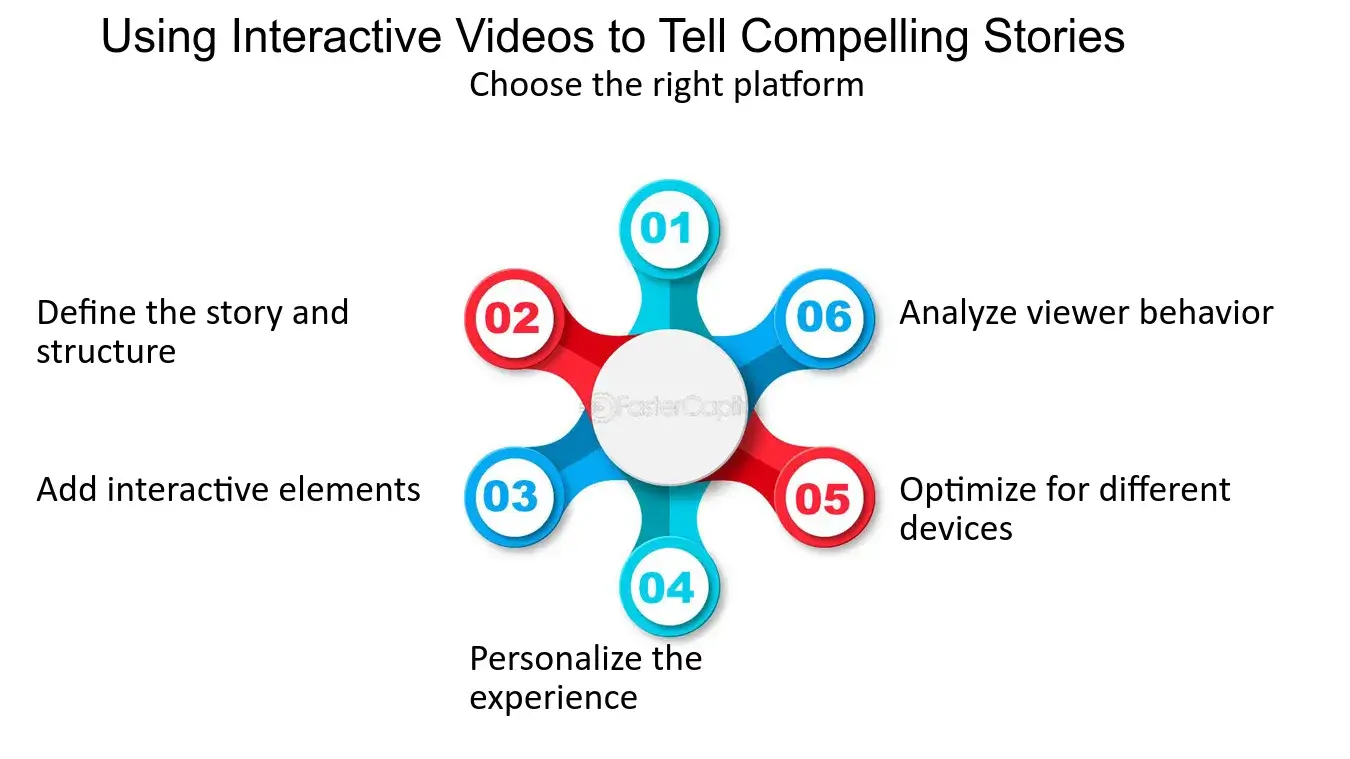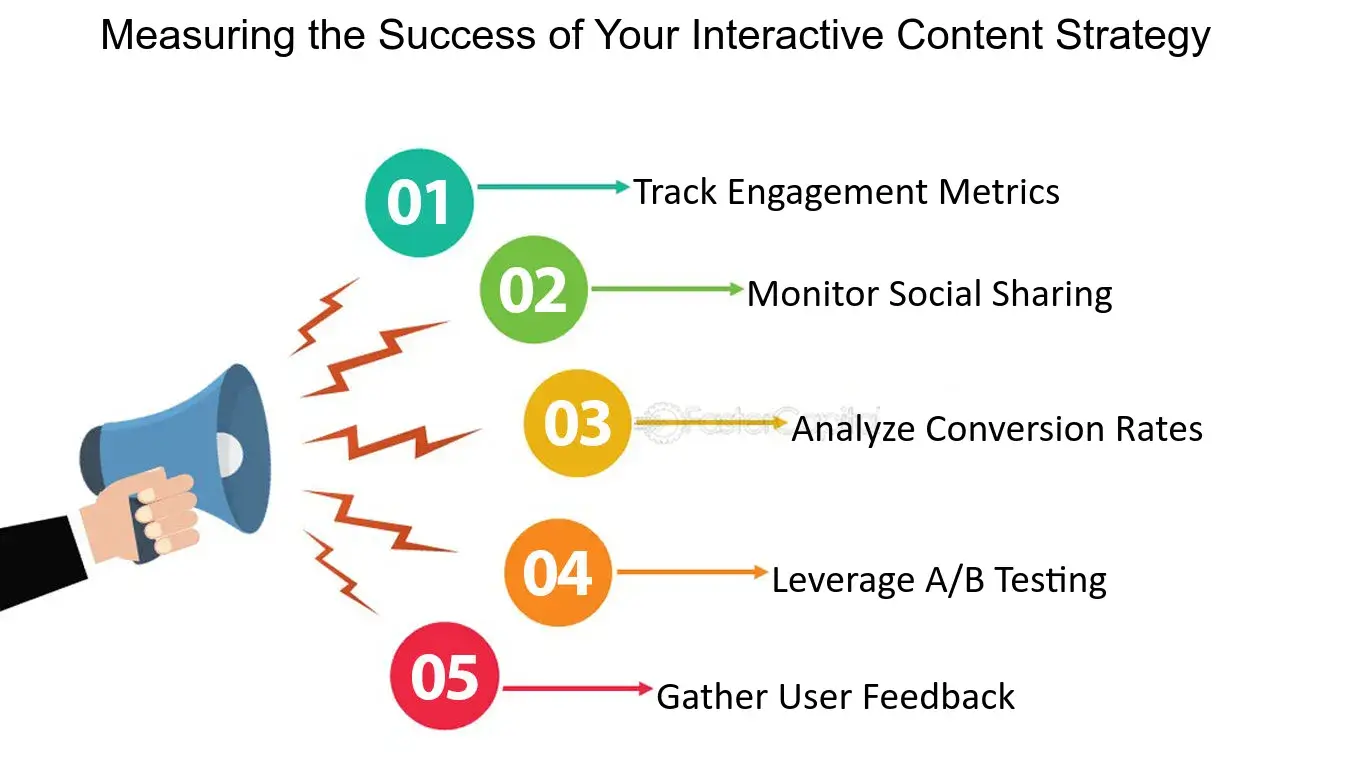SHARE

In today’s digital age, capturing and holding the attention of online audiences can be a real challenge. With the ever-increasing volume of static posts flooding social media feeds and websites, it’s become more difficult than ever to stand out.
That’s where interactive content comes in. By breaking away from the traditional static format, interactive content has revolutionised how we engage with online audiences.
 Understanding the Power of Interactive Content
Understanding the Power of Interactive Content
Before delving into the benefits of interactive content, let’s first define what it actually entails. Interactive content refers to any digital material that requires active participation from the user. This can range from quizzes and surveys to virtual and augmented reality experiences.
Interactive content leverages elements like clickable buttons, drag-and-drop features, and video prompts to create an immersive user experience. Encouraging direct engagement enables individuals to actively interact with the content rather than passively consuming it.
But what makes interactive content so special? Let’s take a closer look.
[thrive_leads id=’8298′]
Defining Interactive Content
Interactive content is like a breath of fresh air in the digital world. It breaks away from the monotony of static posts and offers a dynamic experience that captivates and holds audiences’ attention. Its interactive elements allow users to become active participants, shaping their journey through the material.
Imagine taking an online quiz that not only tests your knowledge but also provides immediate feedback and personalised recommendations based on your answers.
Or picture yourself exploring a virtual reality experience that transports you to a different world, where you can interact with objects and characters in a way that feels incredibly real.
By incorporating interactive features, such as clickable buttons and drag-and-drop functionality, interactive content creates a sense of immersion that traditional content simply cannot match. It transforms passive information consumption into an active and engaging experience.
Why Interactive Content is More Engaging
The key to the success of interactive content lies in its ability to captivate and hold the attention of audiences. Unlike static posts that offer limited opportunities for participation, interactive content fosters a sense of involvement and personalisation, making it highly engaging.
When users are actively engaged with content, they are more likely to spend a longer time on a webpage, exploring all the interactive elements and absorbing the information in a meaningful way.
This increased time spent on a page benefits the user and provides more opportunities for brands to convey their message and build a stronger connection with their audience.
Furthermore, interactive content can boost user interaction rates by offering users the chance to actively participate, whether by answering a quiz question or making choices in a virtual reality experience. Brands can create a more interactive and memorable experience that resonates with their target audience.
Research has shown that interactive content can also enhance overall brand perception. When users have a positive and engaging experience with a brand’s interactive content, they are more likely to view the brand in a favourable light. This can increase brand loyalty and advocacy, as users feel a deeper connection and trust with the brand.
In conclusion, the interactive nature of content provides a welcomed departure from the traditional one-way communication approach. It allows users to actively explore and interact with the material, creating a more engaging and memorable experience.
So, embracing this powerful tool can take your digital presence to new heights, whether it’s a quiz, a virtual reality experience, or any other form of interactive content.
The Shift from Static to Interactive Posts
As the limitations of static content become increasingly evident, many brands and content creators have started embracing interactive content as a powerful tool for engaging their audiences.
Let’s explore some of the key reasons why this shift is happening.
The Limitations of Static Content
Static content, such as plain text articles or image-based posts, often lacks the ability to fully captivate and resonate with audiences. While static content can be informative, it often falls short of creating a memorable and interactive experience for the user.
Imagine reading a plain-text article about the wonders of the Great Barrier Reef. While the information may be interesting, it fails to truly transport you to the vibrant underwater world teeming with life.
Static content cannot capture the awe-inspiring beauty and diversity of the reef in the same way that interactive content can.
Additionally, static content often fails to engage users on a deeper level. It presents information one-way, leaving little room for interaction or personalisation.
This lack of engagement can lead to a passive reading experience, where users quickly skim through the content without absorbing or retaining the information.
How Interactive Content is Changing the Game
Interactive content, on the other hand, offers a fresh and innovative approach to online engagement. Presenting information in an interactive format enables users to actively participate in the content, creating a sense of ownership and immersion.
Take, for example, an interactive quiz about famous works of art. Instead of passively reading about different paintings, users can actively test their knowledge by answering questions and receiving instant feedback.
This not only makes the learning experience more enjoyable but also enhances knowledge retention.
Furthermore, interactive content allows for customisation and personalisation, making it more relevant and engaging for individual users.
Interactive infographics, for instance, enable users to explore data sets and visualisations based on their specific interests or needs. This level of customisation empowers users to delve deeper into the content and extract insights that are most relevant to them.
As technology advances, interactive content is evolving beyond quizzes and infographics. Emerging technologies like virtual and augmented reality take interactive content to new heights by providing users with fully immersive experiences that blur the line between reality and digital content.
Imagine being able to virtually explore ancient ruins or walk through a virtual art gallery, all from the comfort of your own home. These immersive experiences captivate users and offer unique opportunities for brands and content creators to tell compelling stories and create lasting impressions.
The shift from static to interactive posts is driven by the desire to engage audiences on a deeper level and create memorable experiences.
Interactive content allows users to actively participate, customise, and immerse themselves in the content, ultimately leading to increased engagement, knowledge retention, and brand loyalty.
Types of Interactive Content to Consider
Now that we understand the benefits of interactive content let’s explore some of the popular formats that you can incorporate into your strategy:
Quizzes and Surveys
Quizzes and surveys are excellent tools for engaging audiences and collecting valuable insights. By encouraging users to participate and providing instant feedback, these interactive formats can generate high levels of engagement and provide actionable data for businesses.
Imagine a scenario where you are a fashion retailer looking to understand your customers’ preferences. Create a quiz asking users to choose their favourite fashion style or colour palette.
Based on their responses, you can tailor your marketing campaigns and product offerings to better suit their tastes. This not only enhances customer satisfaction but also increases the likelihood of conversions.
Interactive Infographics
Infographics have long been recognised as effective tools for presenting complex information in a visually appealing manner. However, by adding interactive elements such as clickable buttons or animations, you can take the impact of your infographics to a whole new level.
Let’s say you are a technology company launching a new product. You could create an interactive infographic showcasing your product’s features and benefits.
Users can click on different sections of the infographic to learn more about specific functionalities or watch animated demos. This not only makes the information more engaging but also helps users grasp the key points more effectively.
Virtual and Augmented Reality Experiences
Virtual and augmented reality experiences are revolutionising the way we interact with content. By immersing users in virtual environments or overlaying digital elements in the real world, these technologies offer unparalleled opportunities for engagement and storytelling.
Imagine you are a travel agency promoting a new destination. Instead of simply showing static images or videos, you could create a virtual reality experience where users can explore the destination in a 360-degree view.
They can virtually walk through the streets, visit famous landmarks, and even interact with local culture. This immersive experience not only sparks curiosity but also entices potential travellers to book their next adventure with your agency.
As technology continues to advance, the possibilities for interactive content are endless. Whether it’s gamified quizzes, interactive videos, or immersive virtual reality experiences, incorporating interactive elements into your content strategy can help you stand out in a crowded digital landscape and create memorable experiences for your audience.
Creating Compelling Interactive Content
Now that you have a good understanding of the different types of interactive content available, it’s time to explore how to create content that truly captivates your audience.
Creating interactive content is an art form that requires careful consideration of various elements. There are a few key elements to keep in mind to ensure that your content stands out and engages your audience effectively.
Key Elements of Successful Interactive Content
When creating interactive content, it’s important to keep a few key elements in mind. First and foremost, ensure that the content is visually appealing and user-friendly. Aesthetics play a significant role in capturing the attention of your audience.
By incorporating visually stimulating elements such as high-quality images, videos, and animations, you can create an immersive experience that keeps users engaged.
Moreover, interactive features should be intuitive and easy to navigate. Users should be able to interact with the content effortlessly without any confusion or frustration. You can ensure that users can seamlessly engage with the material by providing clear instructions and user-friendly interfaces.
Second, ensure your content is relevant and valuable to your target audience. Understanding your audience’s interests and pain points is crucial in creating content that resonates with them. You can establish a strong connection that encourages continued engagement by addressing their specific needs and desires.
For example, if you are creating interactive content for a fitness website, you might consider incorporating interactive workout routines, personalised fitness plans, or even virtual trainers. By tailoring your content to meet the needs of fitness enthusiasts, you can create an interactive experience that keeps them coming back for more.
Tools and Platforms for Creating Interactive Content
Fortunately, there are numerous tools and platforms available to help you create interactive content, even if you have limited technical skills. These tools streamline the creation process and make it accessible to content creators of all levels.
One popular option is the use of drag-and-drop website builders. These platforms allow you to create interactive websites without coding knowledge. With a wide range of templates and customisable features, you can easily design and publish engaging interactive content.
Another option is interactive video platforms. These platforms enable you to create interactive videos that allow viewers to actively participate in the content. You can transform passive viewers into active participants by incorporating clickable hotspots, quizzes, and branching paths.
Additionally, interactive infographic tools allow you to create visually appealing and interactive data visualisations. These tools provide a range of templates and customisation options, making it easy to present complex information in an engaging and interactive way.
Whether you choose to use a website builder, an interactive video platform, or an infographic tool, the key is to select a tool that aligns with your content goals and technical abilities. By leveraging these tools and platforms, you can create compelling interactive content that captivates your audience and drives meaningful engagement.
Measuring the Success of Your Interactive Content
Creating interactive content is just the first step. To truly optimise your content strategy and ensure its effectiveness, it’s important to measure the success of your interactive content.
Key Performance Indicators for Interactive Content
When evaluating the success of your interactive content, you should consider various key performance indicators (KPIs). These may include engagement metrics such as time spent on page, click-through rates, and social shares. Additionally, you can also measure the impact of your interactive content through user feedback and conversion rates.
Interpreting Engagement Metrics
Interpreting engagement metrics is crucial in understanding the impact of your interactive content. By analysing the data gathered, you can identify areas for improvement and optimise your content strategy to further engage your audience.
Remember, the beauty of interactive content lies in its ability to provide insights into user preferences and behaviours. Use this data to iterate and refine your approach, ensuring that your content continues to captivate and engage your audience.
By embracing interactive content, brands and content creators can break free from the static post rut, capturing the attention of online audiences and fostering meaningful engagement.
So, why settle for static when you can offer an interactive experience that captivates, educates, and entertains? It’s time to take your content to new heights and embrace the power of interactive engagement.
[thrive_leads id=’3729′]









